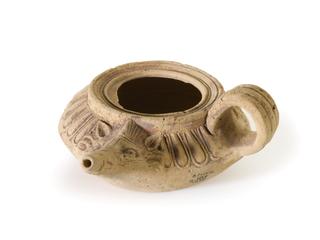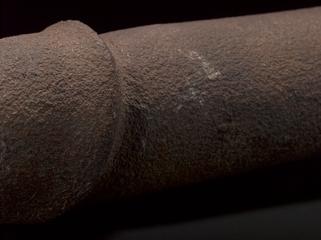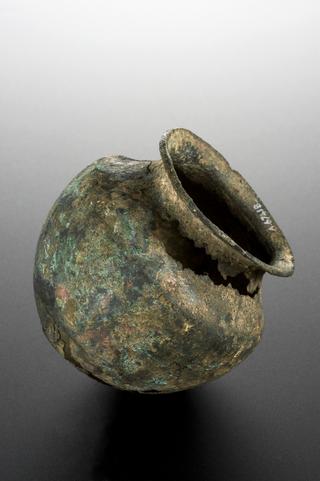
Copy of a bloodletting measuring device, England, 1977
- Made:
- 1977; 1204-1206 in England and Mesopotamia


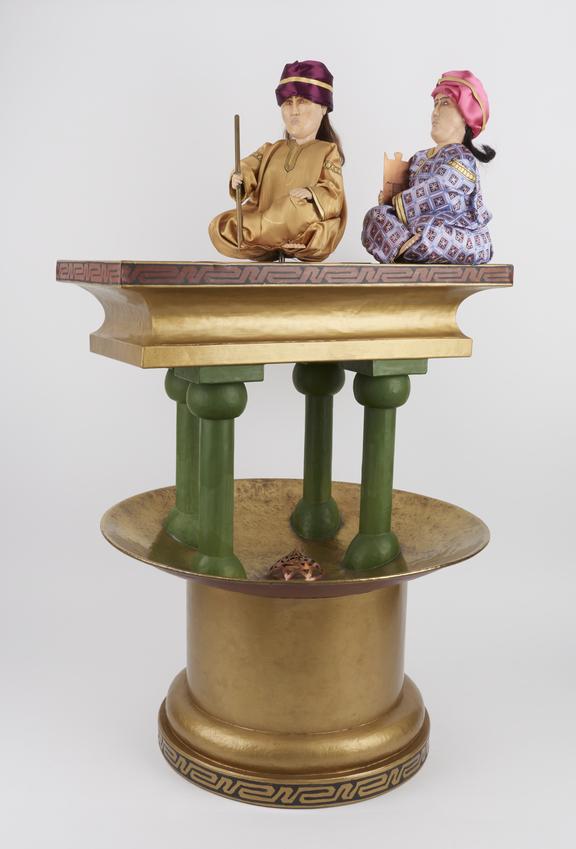
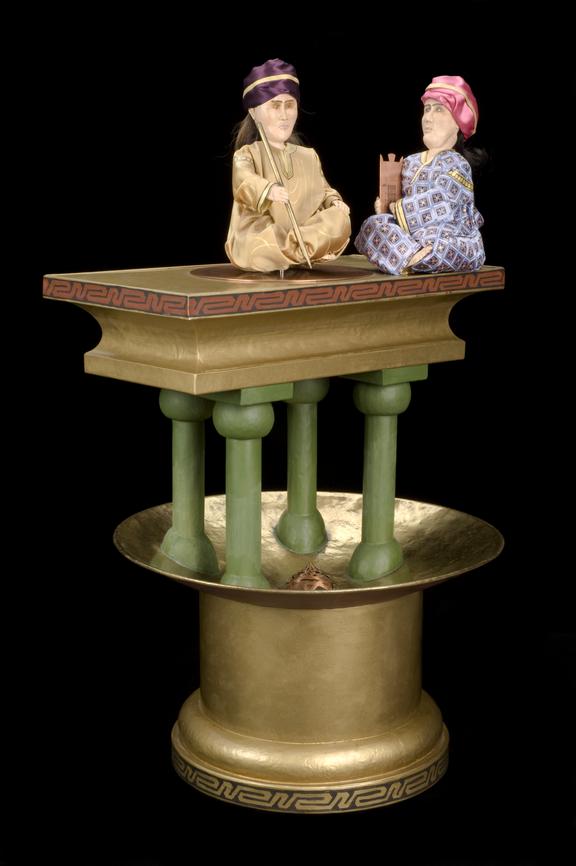
Blood letting device as described by Al-Jazari in his "Book of knowledge and Ingenious Mechanical Devices" AD 1204-6, reconstructed 1977
Model of a blood letting device as described by muslim scholar Al-Jazari in AD 1204-6, and reconstructed in 1977. It measured the blood lost during phlebotomy (blood-letting) sessions, a popular therapy in the Arab world. It is illustrated in Al-Jazari's manuscript, the Kitab fi ma'rifat al- hiyal al-handasiyya ('Book of Knowledge and Ingenious Mechanical Devices'), which was written in 1206. This book described the construction, components, and functions of 50 mechanical devices, or automata. Two scribes are seated above the device and their actions describe the amount of blood to be let.
Details
- Category:
- Classical & Medieval Medicine
- Object Number:
- 1981-1710
- Materials:
- bowl, steel, ? material and figure, plaster
- Measurements:
-
overall: 880 mm x 518 mm x 490 mm,
- type:
- model
- credit:
- Festival of Islam Trust
